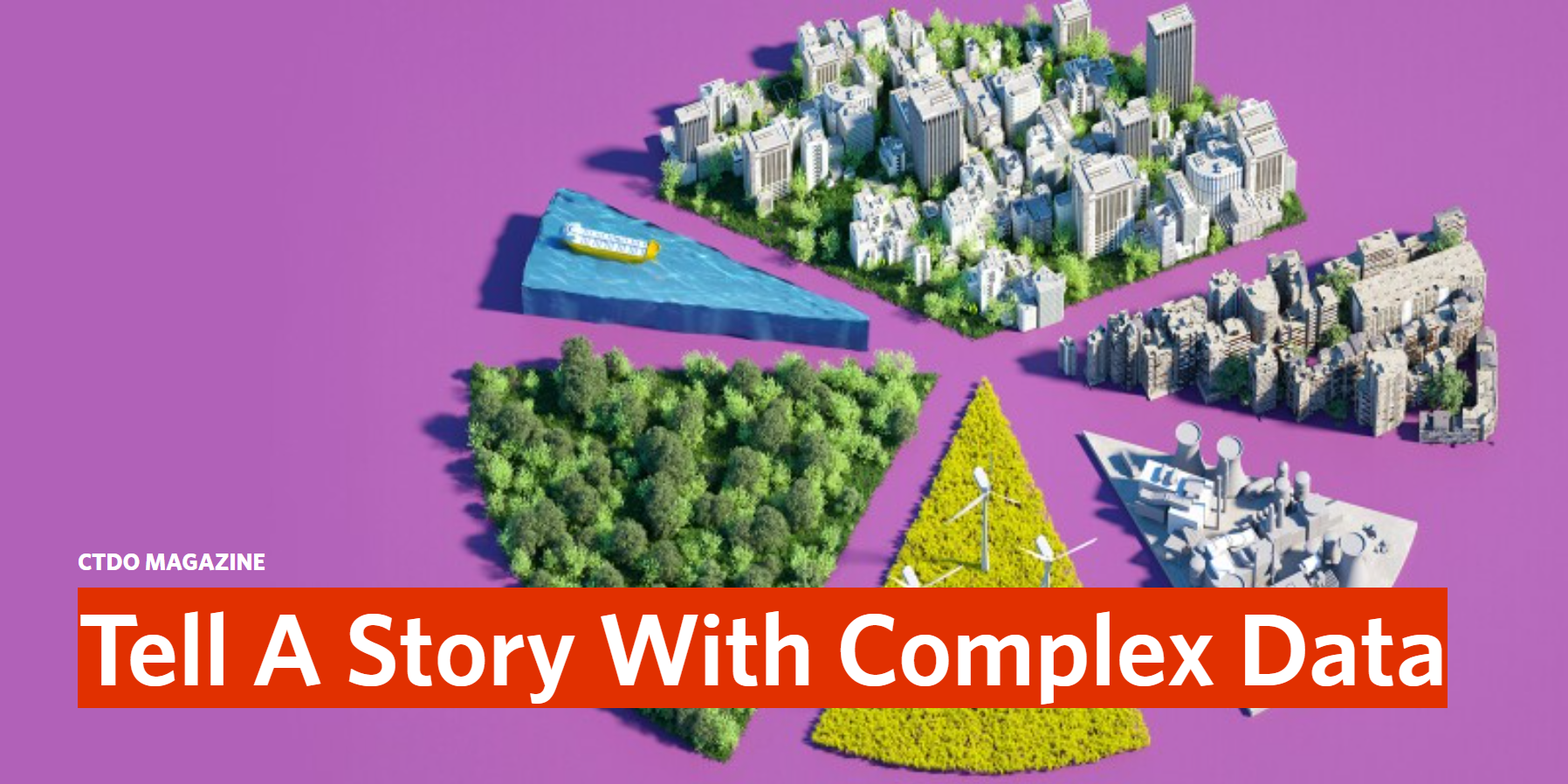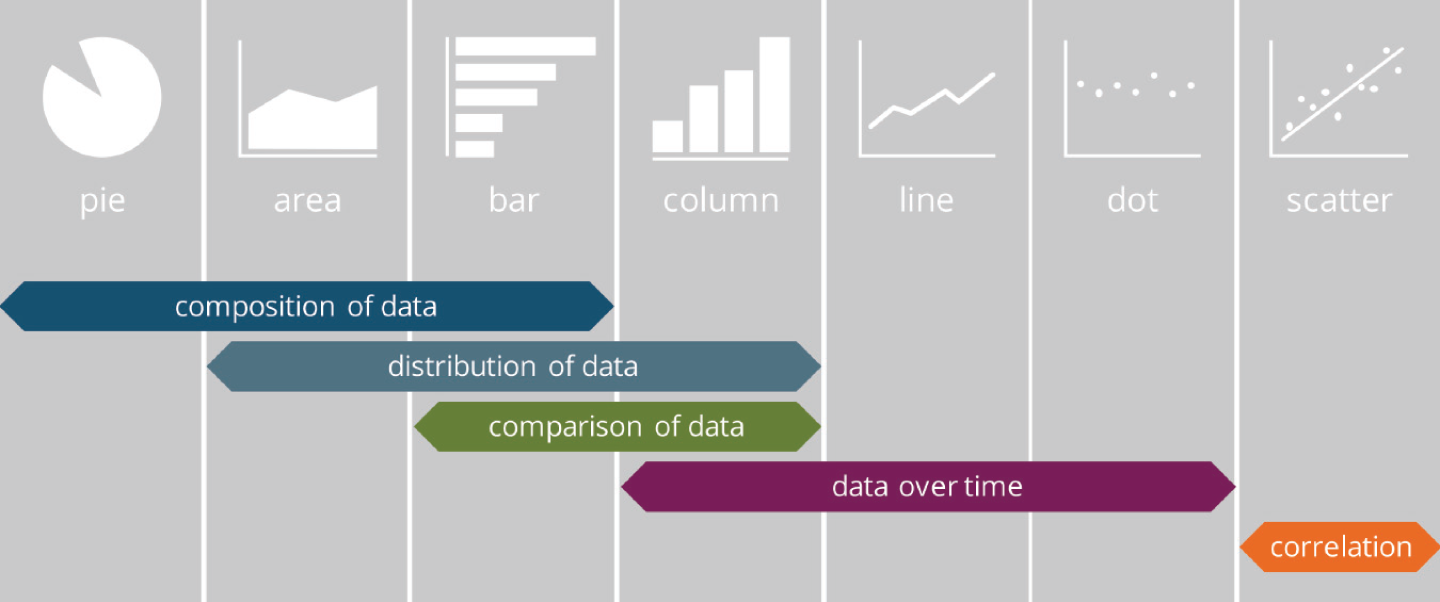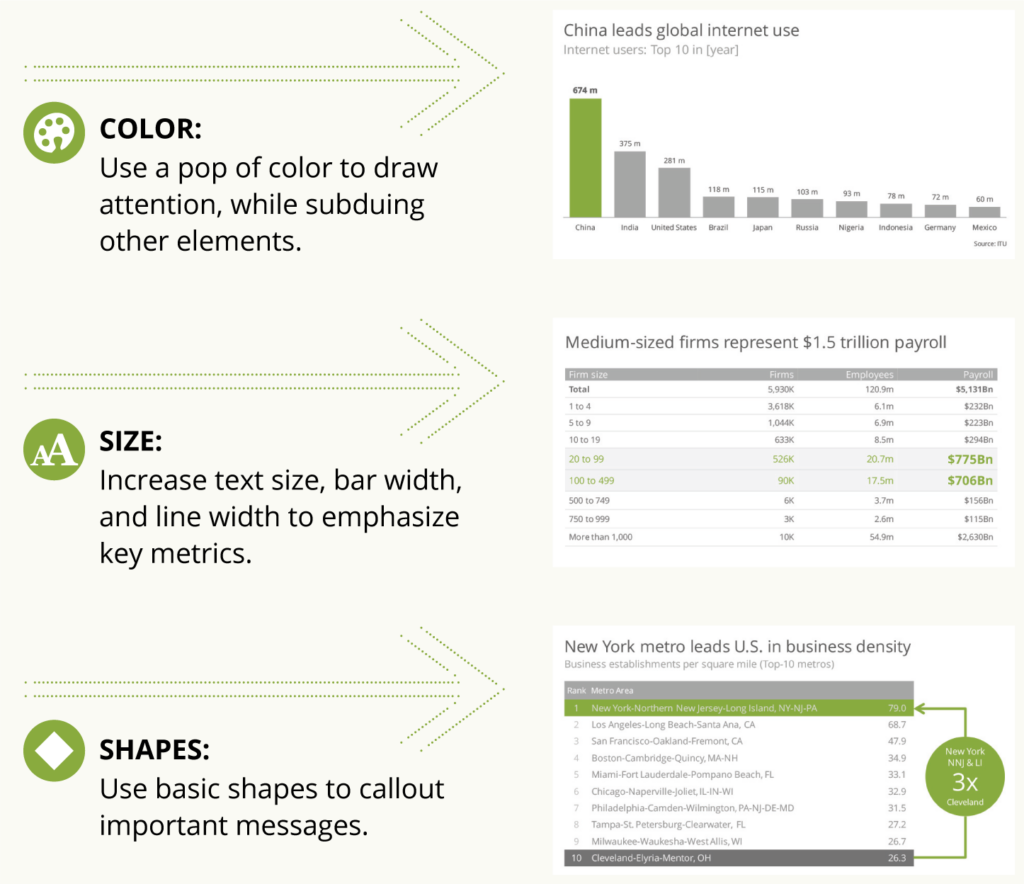Use these five methods to strategically present data to stakeholders.
As a talent development executive, you help organizations grow and transform their workforces. As such, you’re often called upon to share a wealth of data-driven insights and recommendations with other senior leaders.
But that can be challenging. How do you present complex information to a roomful of colleagues with limited time—and short attention spans—who desire to quickly understand the big picture?
You need a data visualization strategy. The benefits are twofold. It helps you understand what the data is really saying, providing guidance for an organization on how to bring forth the right insights that drive real business impact; and it helps you communicate your insights to others.
By combining data with strong, simple visuals, you humanize your most important points, guiding decision-makers to understand complex concepts, remember important information, and make business-critical decisions.
Better yet, you don’t need to be a PowerPoint samurai or graphic designer to excel at this. A few classic design principles can help you learn the skill of visual storytelling.
Address the audience’s needs
Storytelling with data requires offering a larger, holistic view of your message. Focus first on your audience and structure a broader narrative before you choose any data visualizations.
Walk in your audience’s shoes by asking yourself from the start:
- What’s going on in their world? What current challenges are they seeking answers to?
- What do I want my audience to know or do with the data I am presenting?
- How will I structure a narrative that leads to the desired action?
- How is my data helping drive that decision?
We can’t understate how important it is that you have a purpose for all data you present. The more specific you can be, the better.
If executives, board members, and other decision makers don’t understand your key message in the first 60 seconds, your communication—whether a full presentation, a few slides, a one-pager, or even an email—could be doomed. Present your vision immediately before delving into the details, always link to strategic initiatives, and lead with stories—not data.
Although it may be tempting to take everyone behind the scenes or reveal your inner data geek with multiple slides with complex graphs, decision makers are craving insights and broad analysis that help them guide strategy. Consider issues from the perspective of a group of stakeholders who often have multiple constituencies. Remember, they ultimately want you to answer the unspoken question: What do you want me to know or do with this information?”
Don’t make your audience decode your message
It’s your job to make it easy for stakeholders to scan and digest information quickly. Data isn’t the big idea—your story is.
Articulate your message, then choose the right type of visual to support that message. When your next meeting is on the horizon, first examine your data insights and isolate your key message.
Next, consider what metrics will support your story and help it pack a punch. Don’t flash unnecessary data just because you have it.
Feature primary data in the proper chart and keep the rest of your data hidden. For powerful data storytelling, the right chart will get you well on your way.
Demonstrate Data Relationships
How do you choose a chart that tells a story and drives action? The main thing to remember is that the purpose of all charts is to show the relationships in your data. Think about what charts or tables best feature the relationships that fit the data story you are trying to tell.
 When using charts, highlight key insights
When using charts, highlight key insights
Spreadsheet-generated graphical charts can bring your numbers to life, but often the output is visually cluttered—think gridlines, legends, and labels—and doesn’t shine a spotlight on the real insights the charts need to convey.
To help your audience quickly understand what you want to communicate, provide a visual focal point that highlights the critical points. Three simple visual tricks can work wonders to help accentuate your data.
- Color: Use a pop of color (such as bright blue) to draw attention while subduing other elements (use gray for those elements).
- Size: Increase text size, bar width, and line width to emphasize key metrics.
- Shapes: Use basic shapes to call out important key data insights.
 Turn headings into headlines
Turn headings into headlines
Don’t overlook the text. Imagine each slide or document as a news article.
What is the most significant data insight you want to share? Then develop headlines and let them do the heavy lifting by telling the stakeholders exactly what to conclude about the data they are looking at.
Keep headlines short and crisp and compelling and provocative. Include a benefit, cause and effect, or analysis results. For example:
“Fuel Costs to Drive Airfares up 25%”
“QuickPass Cuts 18 Minutes Off the Average Commute”
“Top 2 Movie Distributors Hold 1/3 of Total Market Share”
Think outside the chart
Slapping a spreadsheet with lots of bullets on a slide is the opposite of good data visualization. The information will simply wash over stakeholders, causing squints and confusion. Instead, demonstrate the data beyond pie charts and line graphs.
- Photos: An image can be powerful in data storytelling. Photos are memorable and can humanize your data by helping to connect it to your audience on an emotional level.
- Icons and other visuals: Try using icons, rather than photos, to represent ideas. Use a combination of oversized numbers, text, and basic shapes to draw the eye to a key data insight and advance the story forward.
- Diagrams: This is a great method for chunking and clustering information into small, digestible concepts using various shapes and colors.
- Text: Use big, bold numbers to highlight critical metrics or summarize findings.
- Video: Incorporate short clips to change the pace, voice, and medium of your data story.
Be strategic
Decision-makers face a nearly universal problem: too much data and not enough real answers to critical questions. However, when you strategically present data and complex information, you illuminate your ideas and lead decision-makers to better, faster outcomes.
When presented poorly, your data can create confusion, leading stakeholders to decode the data themselves, misinterpret your message, and ultimately stall in their next steps. To avoid falling into that credibility trap, remember this mantra: story first, visuals second.
Combining the art and science of storytelling will take your organization to new heights. In the end, what everyone is craving are insights that help drive innovation, investments, and even hiring decisions. Pushing your organization—in every role or level—toward a culture of meaningful, authentic data storytelling could be the critical move that accelerates growth across your company in the years ahead.
Republished with permission from TD.org.

 When using charts, highlight key insights
When using charts, highlight key insights Turn headings into headlines
Turn headings into headlines